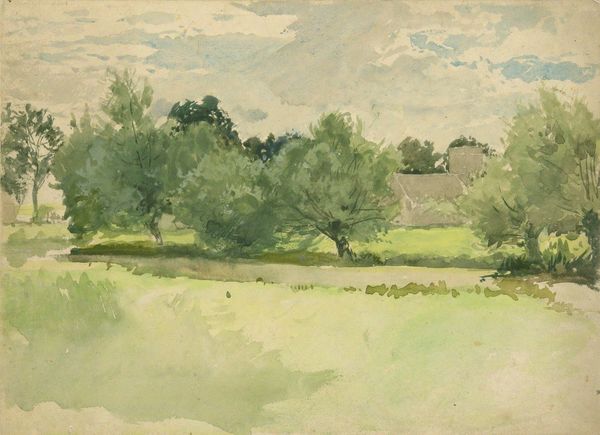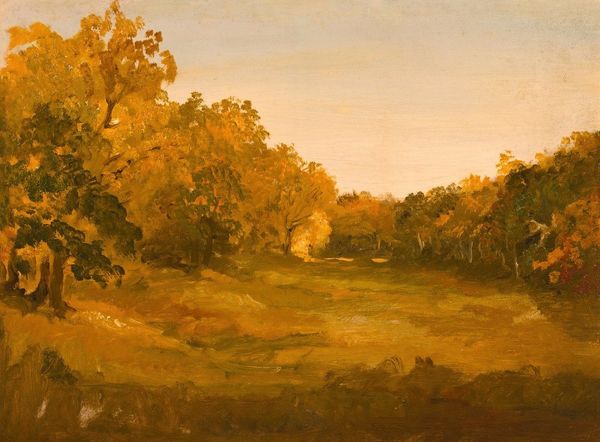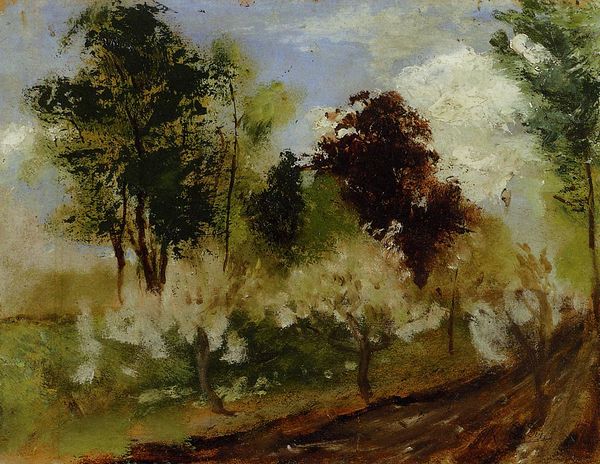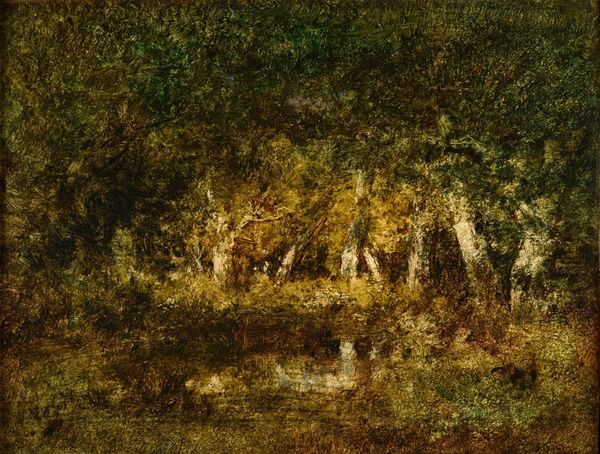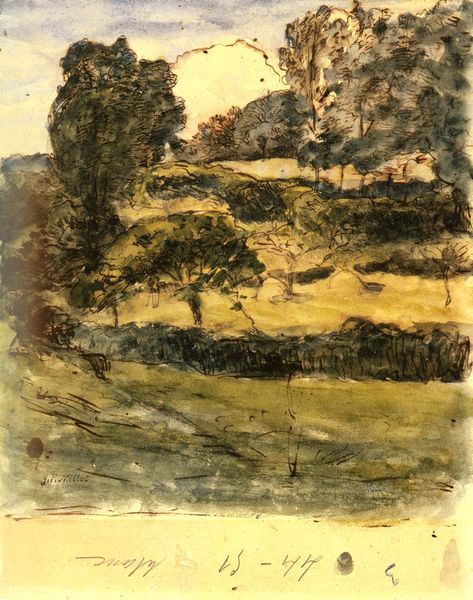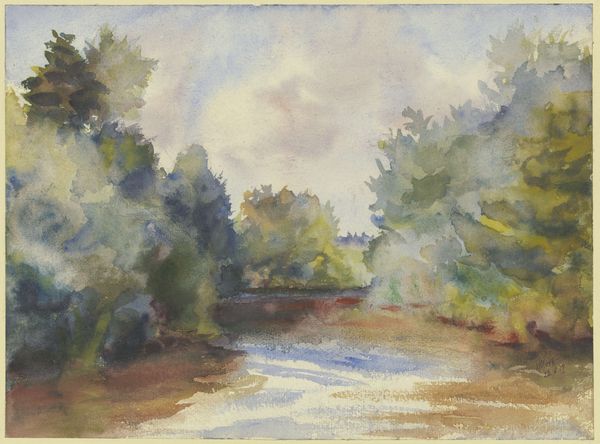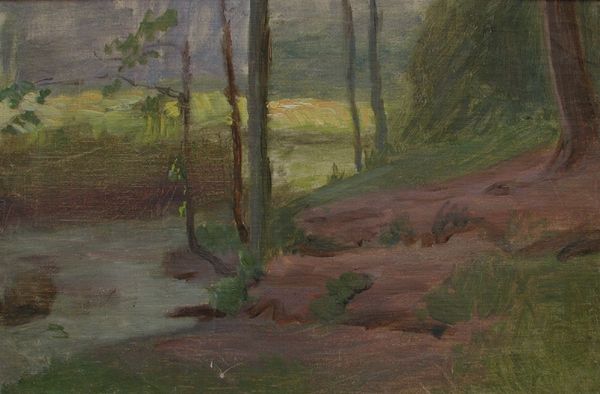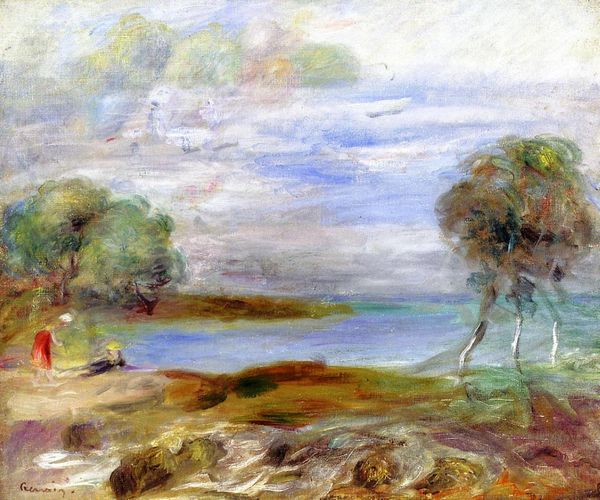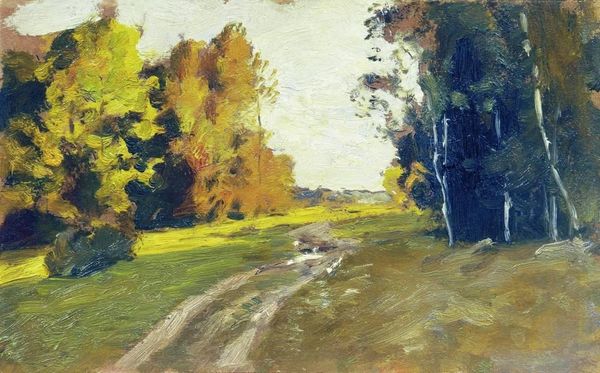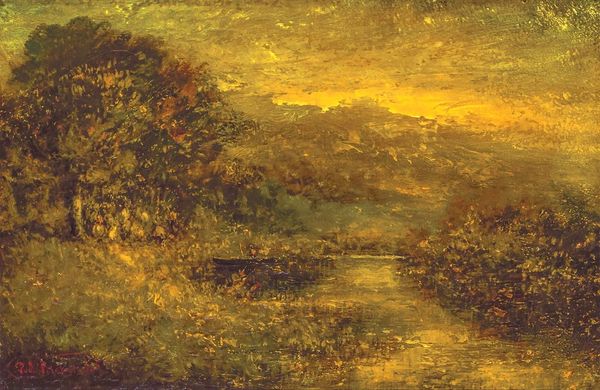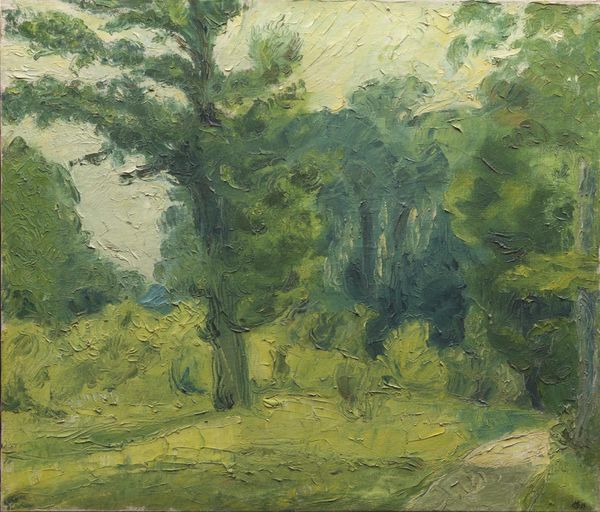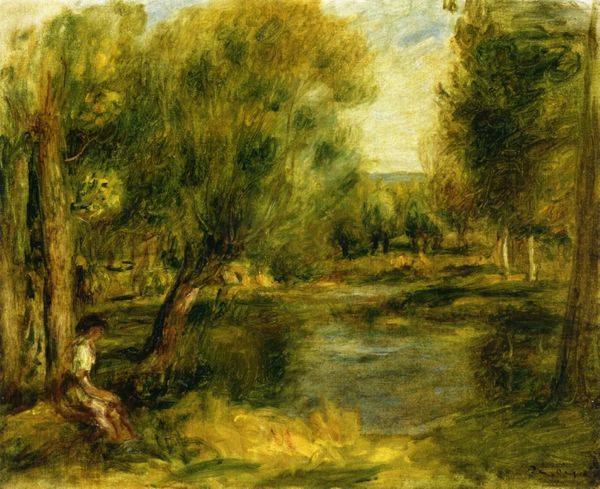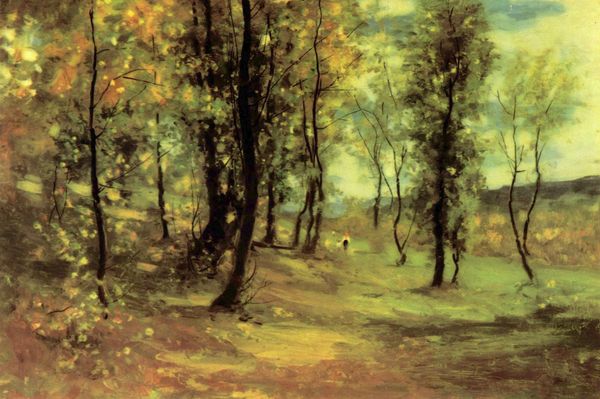
painting, plein-air, oil-paint
#
painting
#
impressionism
#
plein-air
#
oil-paint
#
landscape
#
impressionist landscape
#
oil painting
#
modernism
#
realism
Copyright: Public domain
Curator: I find myself drawn to the simplicity and directness of this piece. It’s almost melancholic in its presentation of the seasonal landscape, perhaps the inevitability of time reflected in the fading light. Editor: We’re looking at “Landscape,” an 1884 oil painting by Thomas Eakins. While best known for his portraits and figural works that frequently courted controversy, here he's engaging with the plein-air tradition and exploring the impressionistic style in vogue at the time. Curator: Eakins was such a fascinating paradox, so rooted in realism yet clearly interested in the burgeoning modern art scene of the late 19th century. One could read this canvas as a conscious choice to engage in the shift towards landscape, away from industrialization or even rigid class portraiture, that many artists faced. How was he navigating the changing art world in which depictions of workers was starting to compete against bourgeois portraiture and pastoral landscapes? Editor: Certainly, and it is important to acknowledge that even this pastoral image comes freighted with historical context. Landscape painting during this period was intertwined with ideas about property ownership, national identity, and even the romanticizing of rural labor, wasn't it? There’s also the materiality of the paint itself. It's quite loosely applied; you can see how the strokes build up, the textures, the layering – almost like a tapestry made of pigment. Did Eakins see the potential of an industrialized paint production to shift the artist’s engagement away from meticulous preparation, more like construction work with visible, purchasable units? Curator: Absolutely, but look at the composition – the almost flattened perspective. There's a sense of immediacy in the marks, as if he were capturing a fleeting moment with the quick, efficient tools afforded by innovations in mass production. Yet that spontaneity hides an awareness of how the natural world can reinforce the systems of power and access that determine the life and culture of the artist. What choices about labor and consumerism, or about ownership and exclusion, are embedded in the tools and subject matter? Editor: Indeed. Even Eakins' decision to paint en plein air carries its own historical baggage, becoming popular in conjunction with development in industrialization. And his choices regarding representation could reflect the larger structures of dominance shaping access to land and leisure, which in turn have affected social mobility and personal expression. Curator: In some ways, this image seems more relevant now as climate change impacts rural labor, migration and social inequities related to land ownership more starkly. Editor: Ultimately, this deceptively simple landscape invites us to examine the interplay between nature, industry, and social structures in the 19th century, which continue to influence our present day.
Comments
No comments
Be the first to comment and join the conversation on the ultimate creative platform.
